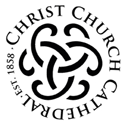Why did Women Wear Head Coverings in the Church?
Throughout much of Christian history, women were expected to cover their heads during worship services, and this tradition extended to many denominations, including the Episcopal Church. The practice of women wearing head coverings has deep theological, cultural, and liturgical roots that have evolved over centuries. In this article, we will explore the reasons why women wore head coverings in the Episcopal Church and how this practice has changed over time.
1. Biblical Foundations: The Apostle Paul’s Teachings
The tradition of women covering their heads during worship can be traced back to the New Testament, particularly to the writings of the Apostle Paul. In 1 Corinthians 11:2-16, Paul addresses issues of propriety in worship and the roles of men and women in the church. He writes:
- “But every woman who prays or prophesies with her head uncovered dishonors her head…” (1 Corinthians 11:5, NIV).
Paul’s directive to cover one’s head while praying or prophesying is rooted in the idea of honoring God and maintaining proper decorum in worship. Paul goes on to explain that the head covering symbolizes a woman’s respect for the divine order of creation, with man being the head of the woman and Christ being the head of man. This scriptural passage became foundational for many Christian communities, including the Episcopal Church, which upheld these traditional practices as part of their liturgical and theological framework.
2. Symbolism of Modesty and Reverence
In the context of the Episcopal Church, as in many other Christian traditions, the head covering became a symbol of modesty, reverence, and humility before God. In the early centuries of the Church, women’s roles in public life were more restricted, and modest attire was considered a sign of virtue. Covering the head was seen as a way of acknowledging one's place in the larger cosmic order—women’s submission to God’s will and men’s roles as spiritual leaders. This custom was not seen as a sign of inferiority, but rather as a reflection of the social and religious structures of the time.
The head covering was also a visual cue for the worshippers to distinguish between those who were engaged in private, domestic life and those participating in the sacred space of worship. Just as priests wore special vestments to signify their role in the liturgy, women’s head coverings marked them as participants in the holy assembly, with all the reverence that entailed.
3. Cultural and Historical Influence
As the centuries passed, the practice of women wearing head coverings became entrenched in various Christian traditions. For centuries, it was common for women to wear veils or headscarves in public, not just in church. The cultural norms of modesty and respect for authority shaped these practices. In the Episcopal Church, which is a branch of the Anglican Communion, this tradition was carried forward, particularly during the Victorian era when modesty and decorum were considered paramount.
For much of history, women’s roles in the Church were more restricted than men’s, and head coverings were often used to demarcate gender roles in worship. In this sense, wearing a head covering symbolized not just respect for the Church but also a visible sign of women’s traditional roles within the religious and social fabric.
4. The 20th Century: Changing Perspectives
By the early 20th century, cultural and social changes—such as the suffrage movement, the rise of feminism, and shifts in attitudes toward women’s rights—began to challenge long-standing customs, including the practice of head covering. In the Episcopal Church, as in many other Protestant denominations, attitudes toward gender roles became more egalitarian, particularly after the Second World War.
The 1960s and 1970s saw significant shifts in liturgical practice, and the Episcopal Church began to embrace a more inclusive approach to women’s participation in worship. Women were ordained as priests starting in 1976, and the custom of wearing head coverings gradually faded in favor of more egalitarian practices. The liturgical reforms that followed Vatican II (1962-1965) in the Roman Catholic Church also influenced many Protestant communities, including the Episcopal Church, by de-emphasizing ritualistic elements like veils and focusing more on the personal relationship between the worshipper and God.
5. Current Practice and Reflection
Today, the practice of wearing head coverings is no longer a widespread tradition in the Episcopal Church. It is considered optional, and most women do not wear veils or headscarves during worship. However, the practice has not disappeared entirely. Some women, particularly those with more traditional or conservative views, continue to wear head coverings as a personal expression of faith, reverence, and connection to the historical practices of the Church.
For some, the decision to wear a head covering is a form of spiritual discipline, a way to honor the biblical teaching of 1 Corinthians 11. Others view it as an act of solidarity with women in other Christian traditions, particularly in Catholicism and Eastern Orthodoxy, where the practice is still more common.
In modern times, some Episcopal communities, especially those with Anglo-Catholic or high-church leanings, may still observe the custom of head covering, often in the context of a more formal or liturgically rich worship experience. For others, the absence of head coverings reflects a broader trend toward simplicity and equality in worship, which emphasizes the dignity and worth of every person regardless of gender.

